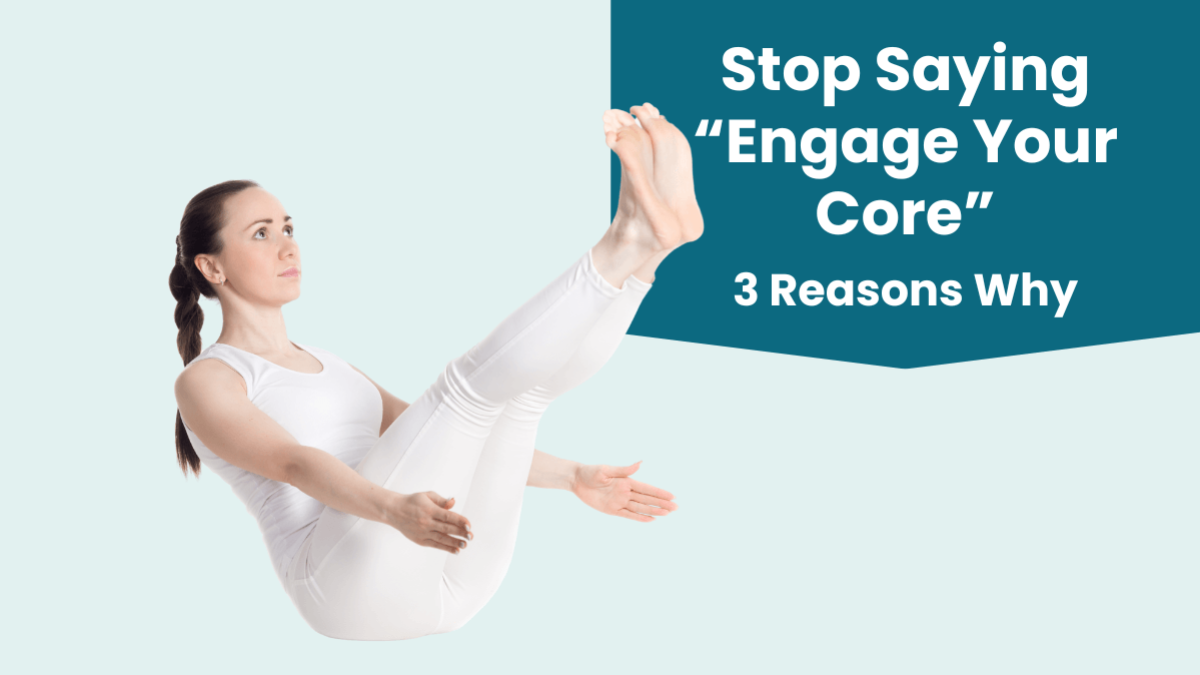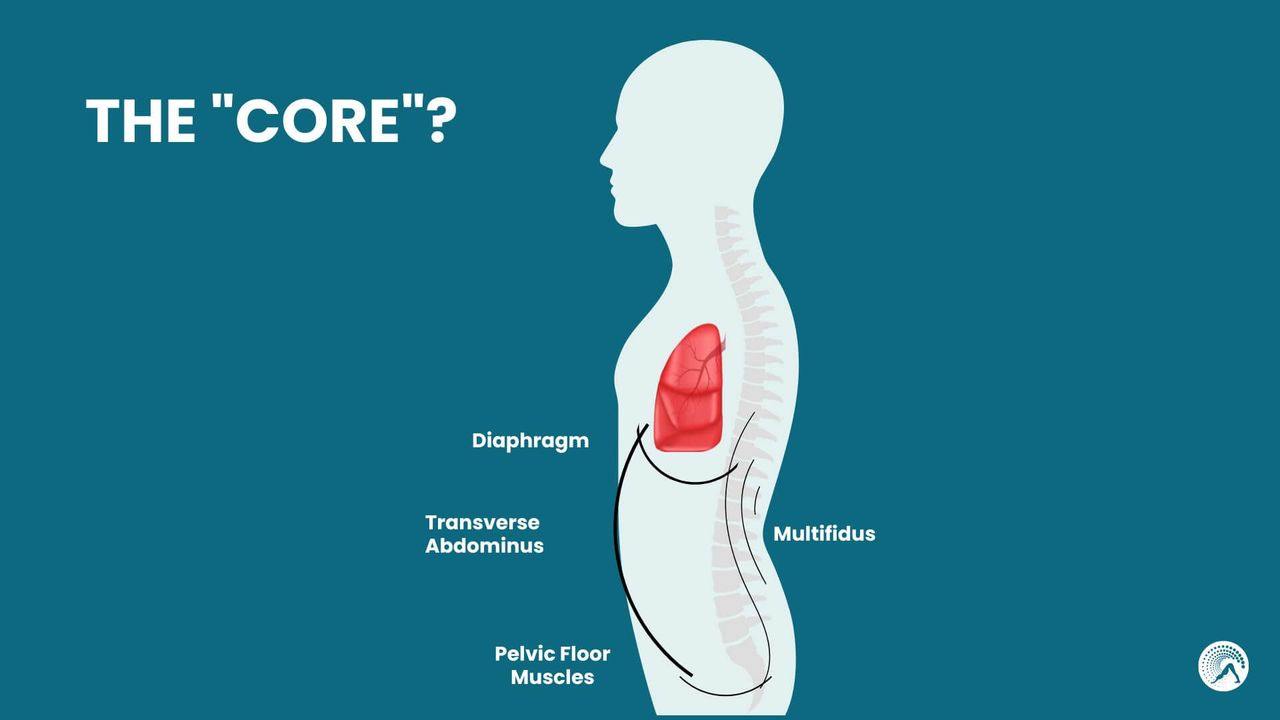3 Reasons to Stop Saying "Engage Your Core" In Yoga

Stop saying "engage your core in yoga" and learn precise, anatomy-informed cues for safer, more effective yoga practice.
.
Are you still saying “engage your core” in yoga classes? If so, you are not alone. I still hear many yoga teachers saying it!
.
“Engage your core” may even be one of the most common cues used by yoga teachers. While it may seem helpful, it often falls short of guiding students toward safe and effective movement. In fact, using the cue "engage your core in yoga" can sometimes create confusion, unnecessary tension, and even lead to physical problems.
In this blog, we’ll explore why it’s time to rethink this overused instruction and discuss three important reasons to stop saying "engage your core in yoga" and start offering more precise and beneficial cues.
.

.
1. The Core Muscles Automatically Activate When Needed
One key reason to reconsider the use of “engage your core in yoga” is that for many movements, the body’s nervous system naturally activates the core muscles as needed. The body is highly intelligent, and it recruits the right muscles automatically when you’re performing a challenging posture or stabilizing in balance poses.
The core isn’t something you have to “turn on” every time you move—it responds instinctively to physical challenges. Whether you’re transitioning into Warrior II or tree posture, your body will automatically activate the core muscles to stabilize and support the movement. Overemphasizing the need to engage the core in yoga can cause students to focus too much on tensing their muscles when the body would naturally adjust on its own.
.

.
Rather than repeatedly reminding students to engage their core in yoga, offer cues that guide them toward the best possible alignment. When the body is in a balanced and stable position, the core muscles often activate as needed, without so much additional conscious effort.
.
2. Over-Activation Can Disrupt the Body’s Natural Pressure System
When students over-interpret the cue “engage your core in yoga,” they often end up pulling their bellies in too much or tightening their abdominal muscles unnecessarily. And this often leads to “sucking the belly in” even when activity level is low. Over-activation of the abdominal muscles can disrupt the body’s natural pressure system and lead to serious issues like incontinence, pelvic pain, and even sexual dysfunction.
.

.
The "core" involves much more than just the abdominal muscles. It includes the diaphragm, pelvic floor, transverse abdominis, and lower back muscles, all working together to maintain balance and stability. Over-engaging the core, particularly by pulling in the belly, can interfere with the function of the pelvic floor and diaphragm, which can create imbalances in pressure and lead to discomfort or injury.
.

.
For example, over-tightening the core in yoga can increase pressure on the pelvic floor, contributing to problems like incontinence or pelvic pain. It can also interfere with proper breathing by restricting the movement of the diaphragm. Yoga is about balance, so instead of pushing students to engage their core in yoga at all times, encourage them to focus on their breath and move with ease, using their core muscles only as needed.
.
3. Most Students Don’t Know What “Engage Your Core in Yoga” Actually Means
There may be occasions where it is appropriate to encourage a more active and conscious contraction of the abdominal muscles. For example, in chaturanga or floating forward, the action of drawing the abdominal muscles in can help create the stability needed for these challenging postures. But it probably doesn’t work to just say “engage your core”.
A major issue with telling students to “engage your core in yoga” is that many of them don’t know what that means. The core is a complex group of muscles, and without proper understanding, students might simply suck in their belly or tense up without activating the right muscles.
Instead of giving a vague instruction like “engage your core,” offer specific cues that help students understand how to move their bodies. For example, try giving them cues that are based on their bones and alignment:
.
- “Lift the front of your pelvis toward your ribs.”
- “Draw your lower ribs in toward each other.”
- “Press the four corners of both feet down into the ground.”
.
These types of cues are much more effective because they focus on the position of the bones, which students can easily understand. By moving their bones in a specific way, they will naturally activate the correct core muscles without needing to be told to engage their core in yoga. This method leads to safer, more effective alignment and allows students to feel more connected to their movements.
.
Conclusion: Use Clear, Actionable Cues for Core Engagement in Yoga
While the phrase “engage your core in yoga” is common, it’s not always the best cue to guide students toward safe, effective movement. Core activation happens naturally in most postures, and over-activation can lead to imbalances and discomfort. Moreover, many students don’t fully understand what it means to engage the core, leading to confusion and ineffective muscle use.
.
As a yoga teacher, your role is to offer clear, actionable instructions that help your students move mindfully and safely. By giving them specific cues based on alignment and bone movement, you can ensure that their core muscles are working in the right way—without the need for overused and often misunderstood phrases like “engage your core in yoga.”
.
Are you ready to transform your teaching with more precise and anatomy-informed cues? Download my free guide, 16 Anatomy-Informed Cues You Can Use Right Now”, and start offering cues that your students will actually understand and benefit from.
.

.
Empowering your students with clear instructions rather than generic phrases will enhance their experience and deepen their connection to their practice. Next time you're tempted to say "engage your core in yoga," think about how you can guide them with specific, actionable cues that lead to true stability and balance.
Categories: : core, cueing, Yoga Anatomy
 Trish Corley
Trish Corley 
